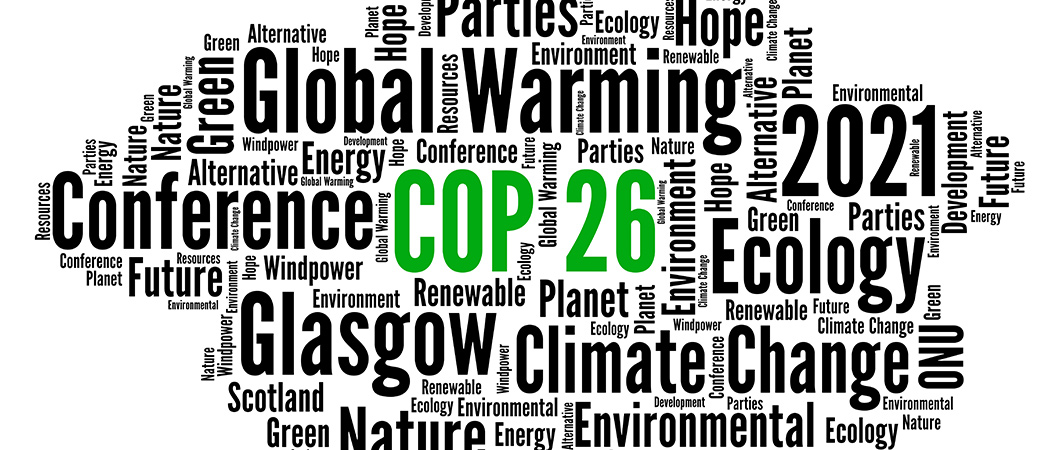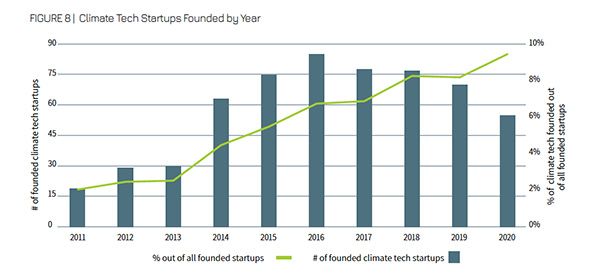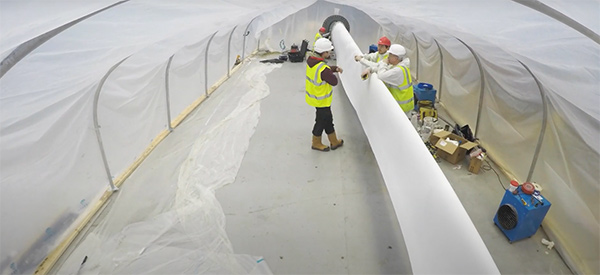
California and the European Institute of Innovation & Technology’s (EIT) climate community have signed a deal to better collaborate and share knowledge on green research and innovation.
Over the past year, the EIT’s climate knowledge and innovation community has been working with California’s Office of Planning and Research to “learn and collaborate on projects that bring together both European and Californian innovation and solutions to climate challenges,” the EIT said in a statement.
The pair will support new and existing climate projects, as well as “explore” new financing mechanisms to speed up investment in areas like retrofitting buildings and the electrification of public transport, they said in a statement marking the deal on 8 November.
“This cross-Atlantic collaboration exemplifies our shared vision to take climate innovation to the next level and dramatically accelerate climate action”, said Climate KIC CEO Kirsten Dunlop.
“For decades the European Union and California have demonstrated climate leadership and innovation, and our team at OPR looks forward to accelerating climate action with the EIT Climate-KIC team and network,” added Sam Assefa, director of California’s Office of Planning and Research, in the statement.
After France and the United States, the COP26 hosts have announced £210 million to develop small modular reactors (SMRs).
While nuclear power obviously remains controversial among environmentalists – Germany is phasing it out – the climate conference has seen a flurry of announcements from countries who hope that modular nuclear can cut carbon.
The UK is the latest to join this race, pledging the money in an announcement on 9 November.
“This is a once in a lifetime opportunity for the UK to deploy more low carbon energy than ever before and ensure greater energy independence,” business and energy secretary Kwasi Kwarteng said in a statement.
The government money will go to Rolls-Royce SMR, a company that has the luxury carmaker as a major shareholder. It is being matched by £250 million of private investment.
Unlike traditional reactors, SMRs can be pre-build in factories, rather than having to be constructed on site. Advocates for the embryonic technology also say they will be safer than conventional nuclear plants, but this is not touted as a benefit in the UK announcement.
The UK’s move follows an announcement by the US during the COP26 conference that it will build a SMR in Romania.
In October, France also announced it would develop the reactors by 2030 as part of a push to decarbonise.
 One side-effect of the pandemic has been less air travel and more virtual meetings - which resulted in a large though temporary reduction in carbon emissions and other climate pollutants. So what would happen if we simply took fewer planes – permanently, pandemic or not? A new study, led by a group at Oxford University and published in Environmental Research Letters, counts the impact.
One side-effect of the pandemic has been less air travel and more virtual meetings - which resulted in a large though temporary reduction in carbon emissions and other climate pollutants. So what would happen if we simply took fewer planes – permanently, pandemic or not? A new study, led by a group at Oxford University and published in Environmental Research Letters, counts the impact.
First, pre-pandemic in 2019, “the emissions of global aviation were about 1 billion tonnes of CO2, more than four times the emissions of New York City,” according to the study. It goes on to predict that, if we go on post-pandemic at that rate, aviation will cause about 0.1 degrees Celsius of “warming by 2050, half of it to date and the other half over the next three decades.” That may not sound like much, but it’s an important part of the total “temperature budget” of 1.5 degree warming set by world leaders so far.
So the answer is just stop flying? That’s one possibility – or, to be more precise, in order to stop aircraft-induced warming we would have to cut plane emissions by 2.5% a year. But it’s more complicated than that. For example, adjusting aircraft cruise altitude can reduce the formation of contrails and hence warming of the planet caused by the cirrus clouds that develop from these persistent white streaks of condensed water. But changing cruise altitude costs more CO2.
But it isn’t hopeless, the group says. Switching to using a 55% or 90% zero-carbon fuel mix by 2050 could help. So would a stop to “fuel tankering”, carrying more fuel on the plane than needed, to save on refuelling costs at destination. More efficient air traffic control would also help. And then there’s simply changing our habits: stop flying and do more meetings virtually. Fly me to the Zoom?
Europe’s molecular biology institutes say they hold the key to generating novel bio-based solutions for tackling environmental damage and climate change.
In a new paper, the European Molecular Biology Laboratory (EMBL) argues molecular biology could help reduce methane emission from cattle, address pollution through metabolic engineering, decrease the use of fertilisers thanks to natural nitrogen-fixing bacteria, create new biomaterials for construction, and enhance the role of carbon-fixing algae.
“We believe there is a lack of awareness of … how life sciences research and research-based innovation can be harnessed in the fight against environmental damage and climate change,” the paper says.
All this is possible thanks to recent advances in imaging technologies, artificial intelligence and data systems that have enabled researchers to follow the dynamics of living matter in real time and at multiple biological scales, from molecular components inside a cell, to whole organisms and ecosystems. In the past year, these new technologies have played a key role in the fight against the COVID-19 virus.
In the past few years, governments have stepped up funding for carbon removal: technologies that can take excess carbon out of the air, and thereby help slow or even reverse global warming. For our high-tech age, it sounds like the perfect fix. But now some suggest it may not be quite that simple.
A group of researchers at Canada’s Simon Fraser University in British Columbia and Concordia University in Montreal ran computer simulations of what could happen when you remove some carbon from the atmosphere, by any technology. Then they compared it with what happens when you add the same amount of carbon, as humanity has been doing for the past few centuries. As reported in Nature Climate Change, the two sums don’t cancel each other out.
They found that, depending on the time-scales involved, after removing carbon the atmospheric concentration would indeed go down. But then it may rise again. That’s because the land and ocean would react to the falling atmospheric concentration by releasing more carbon that they had been sequestering naturally. The upshot: One extra unit of carbon captured doesn’t necessarily translate into one less unit of carbon in the atmosphere.
That means that, for a carbon offset strategy to work, we might have to remove more carbon than anticipated. Or, as the research group led by Prof. Kirsten Zickfield put it in the research paper, removing carbon “could result in a different climate outcome than avoiding the CO2 emissions” in the first place.

One of the biggest ways of getting rid of carbon is right under our feet, in the roots of plants and trees. A study from ETH Zurich, published in Nature Ecology and Evolution, provides a model to predict how much the roots will grow, depending on the local environment, anywhere in the globe.
On average, 24% of the world’s vegetation is located out of sight, in the form of roots, where, along with plants leaves, stems, trunks and branches, carbon dioxide is converted to carbon and stored as an energy source for the plant. But how much the roots grow depends on the local temperature, water supply and other factors. For instance, plants often grow longer roots in dry regions in search of water, and in cold regions to seek nutrients.
The study provides a new tool to help model global carbon cycling and better assess the impact of climate change. The ETH lab, run by Prof. Thomas Crowther, studies global ecosystems, generating knowledge to protect biodiversity and address climate change. The lab produced an interactive feature to explain more.
 The Israeli start-up scene has been making a big bet on climate technologies, with 637 start-up and growth companies now operating in the sector, according to a new report from the Israeli Innovation Authority.
The Israeli start-up scene has been making a big bet on climate technologies, with 637 start-up and growth companies now operating in the sector, according to a new report from the Israeli Innovation Authority.
In 2020, 9% of all new start-ups in Israel were in climate tech. From 2018-2020 the sector attracted $2.97 billion in international investment, and the Israeli government contributed $280 million. The strongest technology areas are in cultivated meat alternatives, irrigation systems and water desalination.
Despite the boom, however, the report notes several problems. It says there is a “lack of the
necessary diversity in both type and focus” of investment groups, and that Israel’s low success rate in submissions to the European Union’s recent Green Deal calls in Horizon Europe suggests the country “is far from realising its global potential.” Among other things, it urges the government to show “leadership by adopting an overall vision for a carbon-neutral Israel.”

A rise in sea level is one of the most worrying impacts of climate change. On current trends, global oceans are predicted to rise by one metre by 2100, wreaking economic damage of up to $27 trillion in the worst-case scenario of the International Panel on Climate Change. Run-off from glacier melt and other land ice sources is a major contributor to this, accounting for 21% of global sea level rise over the past two decades, and about half of all sea-level rise since 1993.
However a study published earlier this year in Nature utilised the supercomputers at the CSC IT Centre for Science in Finland to reveal that, if we manage to limit global warming to the 1.5°C target set out in the Paris Agreement, then we can halve the amount of that land ice that enters the sea.
In essence, the research shows that by limiting global warming in accordance with the Paris Agreement, we will also significantly decrease the amount of sea-level-rise that we experience. Greenland ice sheet melt alone would be reduced by 70% if we can stick to that 1.5°C objective. Antarctic melt is more difficult to predict.
The study drew on the research of more than 80 authors from 38 international research groups and brought together both computer models and statistical techniques to make predictions for the latest socio-economic scenarios. The research is being taken into account for the IPCC's Sixth Assessment report.

Wind farms are expensive. Even though they are a well-established technology, expected to provide 30% of Europe’s electricity needs by 2050, wind farms still carry high costs to run. Their fibre-glass blades are heavy, difficult to transport and hefty to build, as they require special moulds. What’s more, they need to be repaired on a regular basis, driving up costs.
That’s where a Scottish start-up company, ACT Blade, hopes to come in. Its goal is to develop new blades for windmills that can produce 9.3% more energy while costing 6.7% less.
Supported by the EU’s EIT InnoEnergy programme, as well as the UK’s Offshore Renewable Energy Catapult, the Advanced Forming Research Centre and SMAR Azure Ltd, ACT Blade Ltd’s solution is to develop wind turbines that are not made out of fibre glass, but textiles instead, such as those that are found on yacht sails. In this way, the blades are lighter and can therefore be longer, meaning that they capture more wind energy but can still be transported easily. The textile blades also don’t erode, thereby reducing costs for repairs, and they are recyclable. Next on the cards for ACT Blade will be entering the market with their new technology and deploying it on various windfarms.
As Europe grapples with an energy crisis caused by an over-reliance on energy imports, more efficient and less expensive wind turbines could increase Europe’s energy self-sufficiency. A stronger wind energy sector – though not enough on its own to avoid an energy crisis – could bolster Europe’s reserves and help to prevent a repeat scenario in the future.

 A unique international forum for public research organisations and companies to connect their external engagement with strategic interests around their R&D system.
A unique international forum for public research organisations and companies to connect their external engagement with strategic interests around their R&D system.